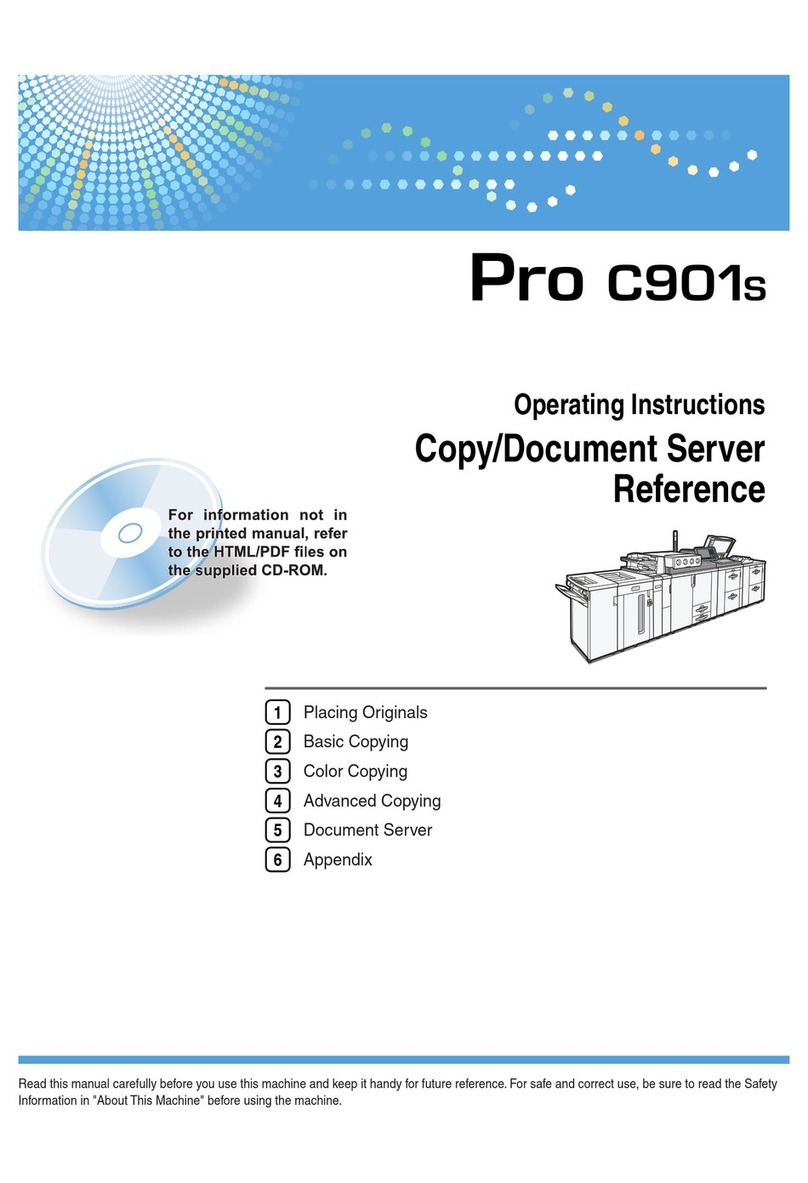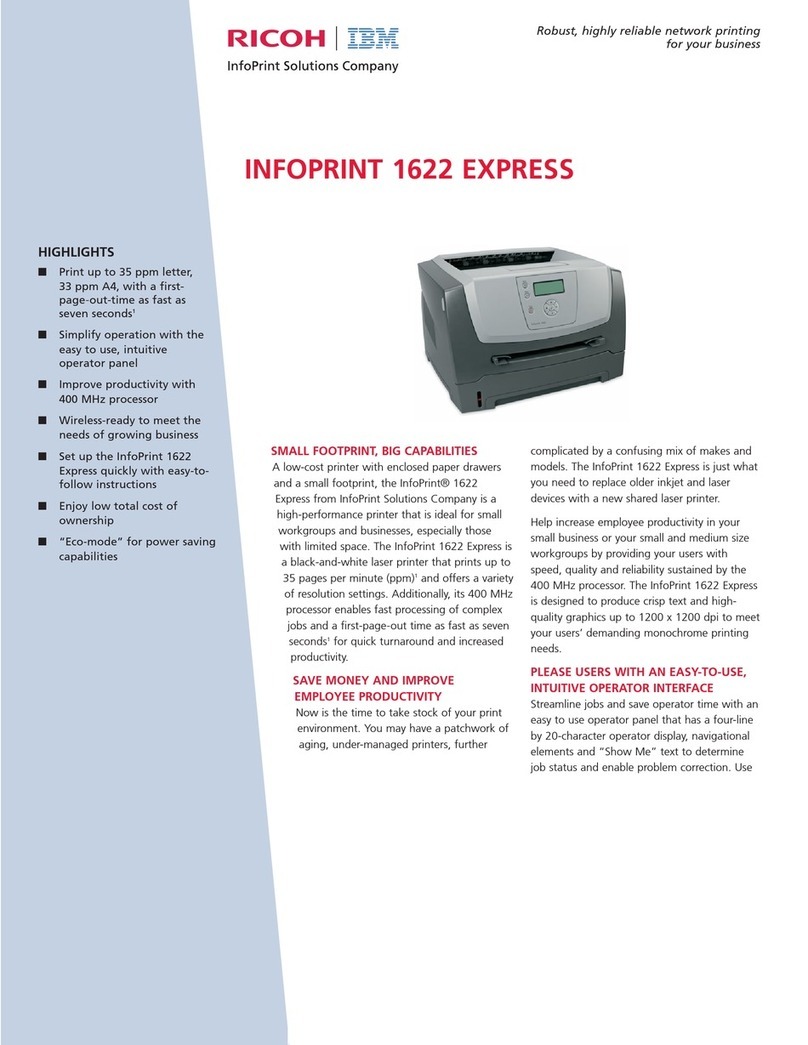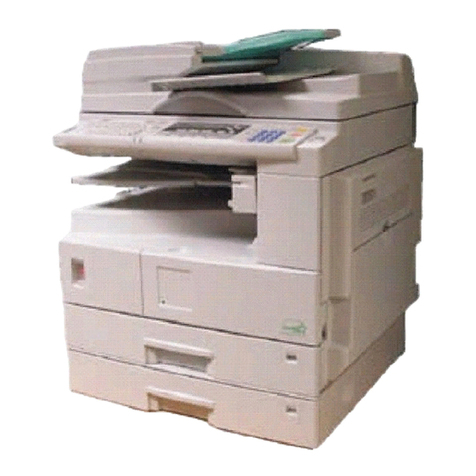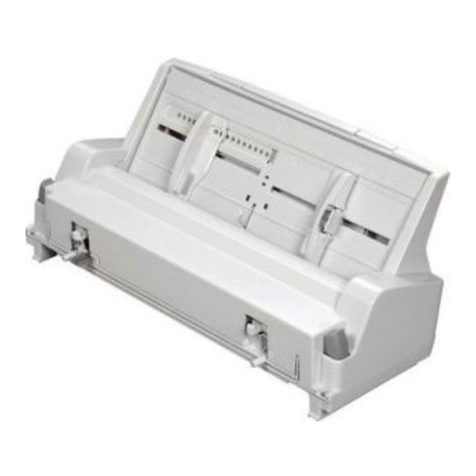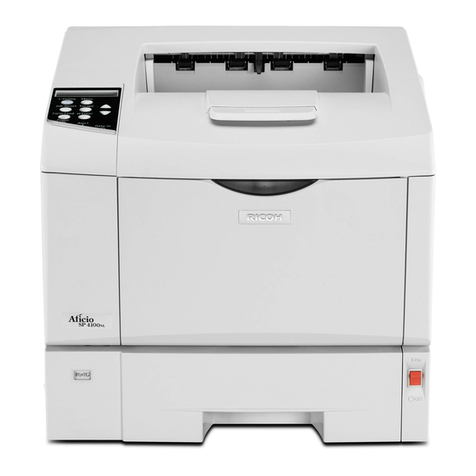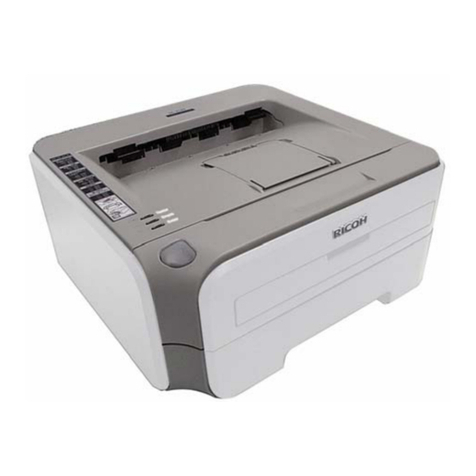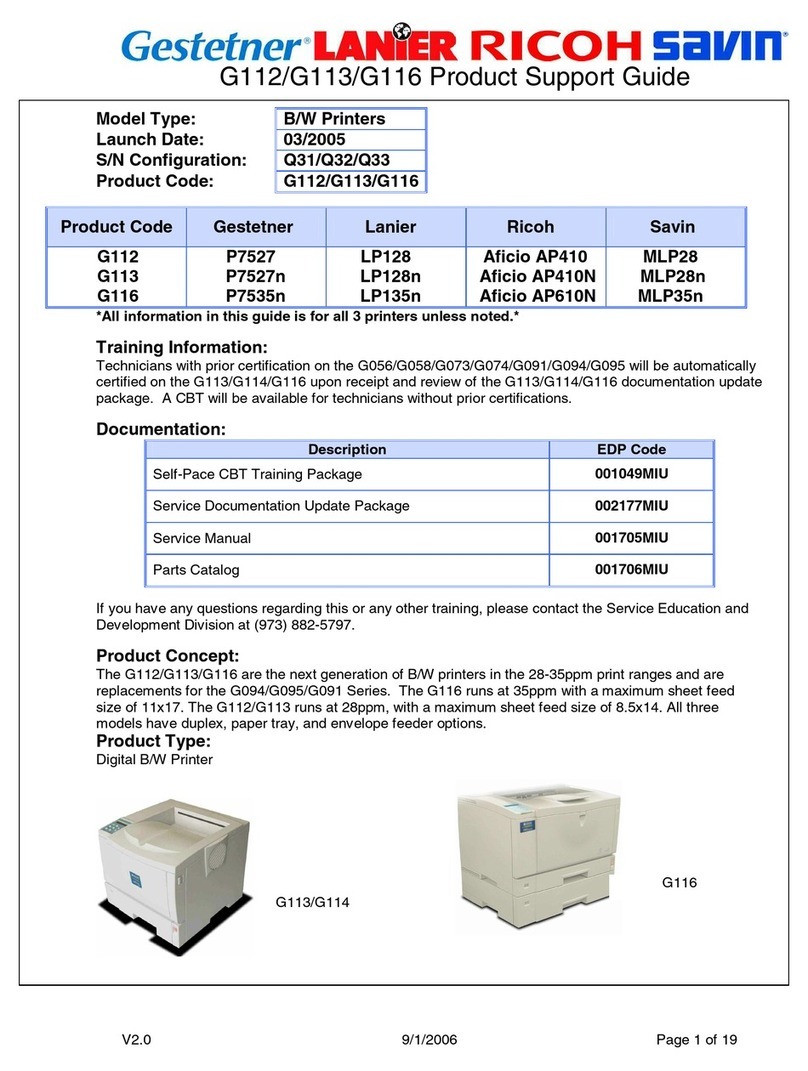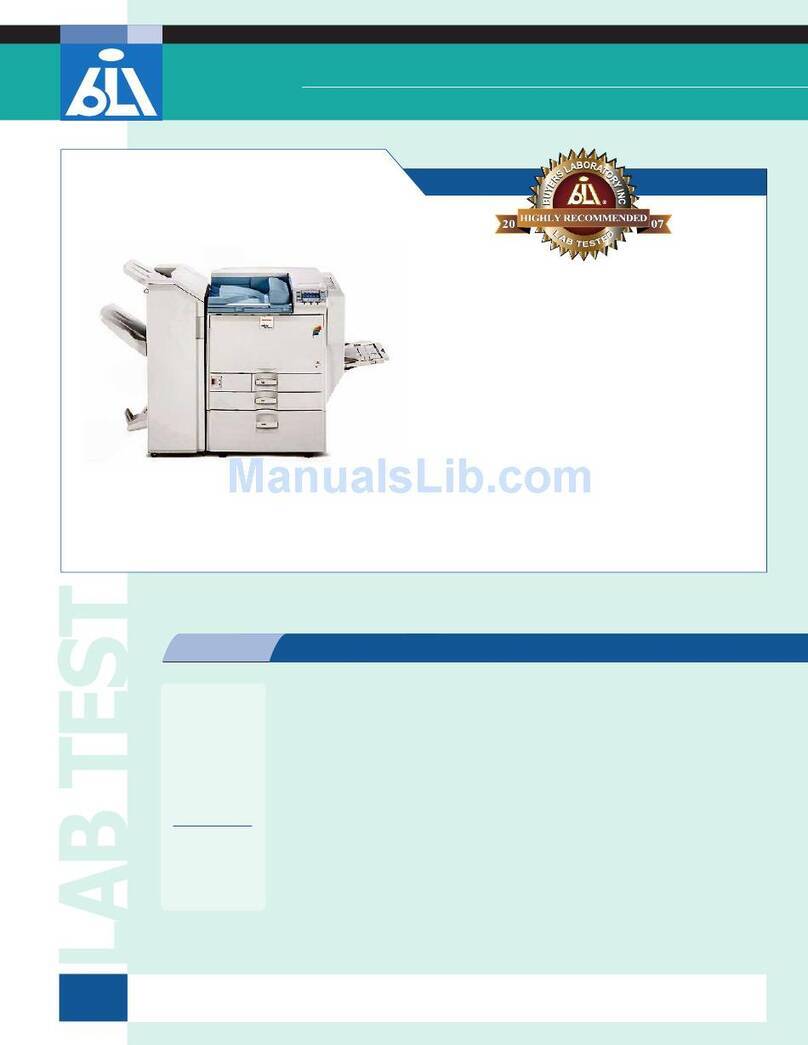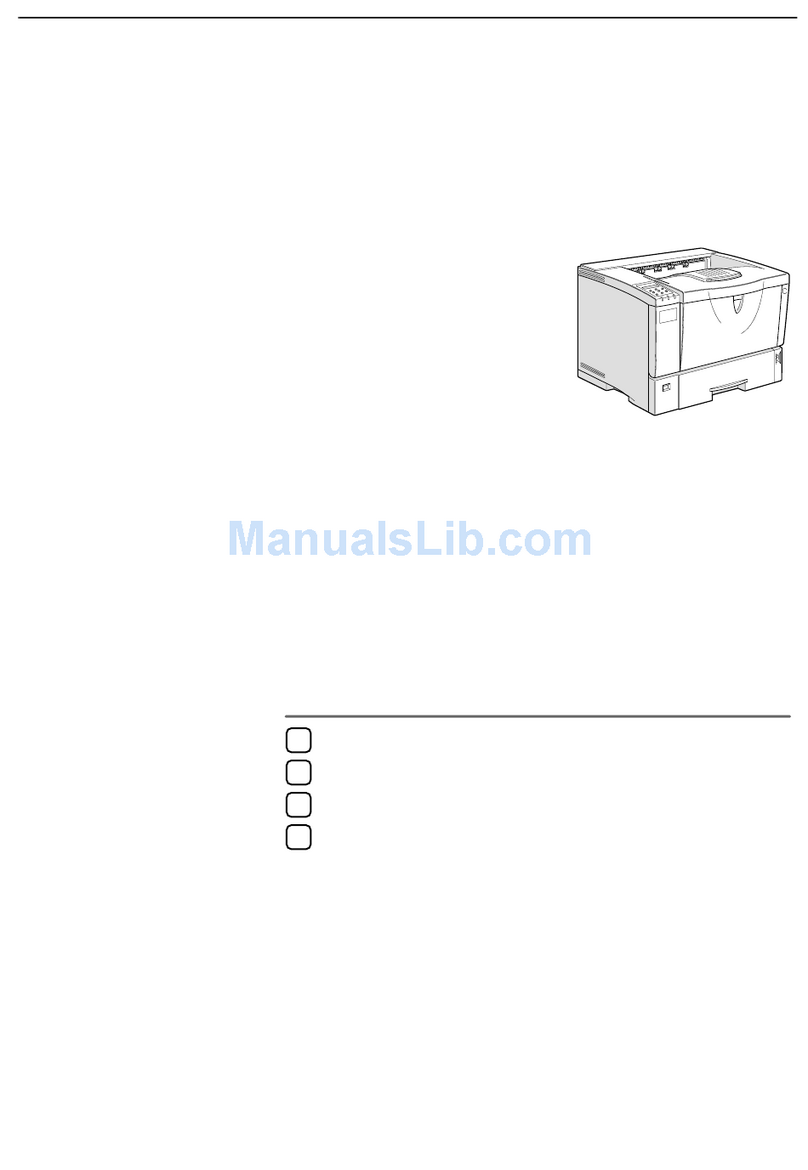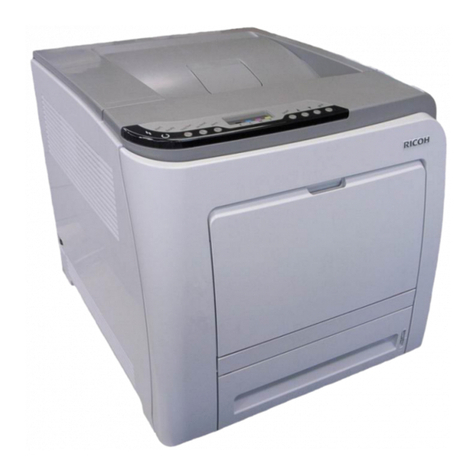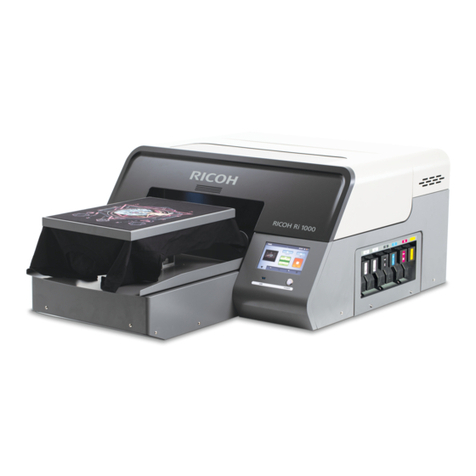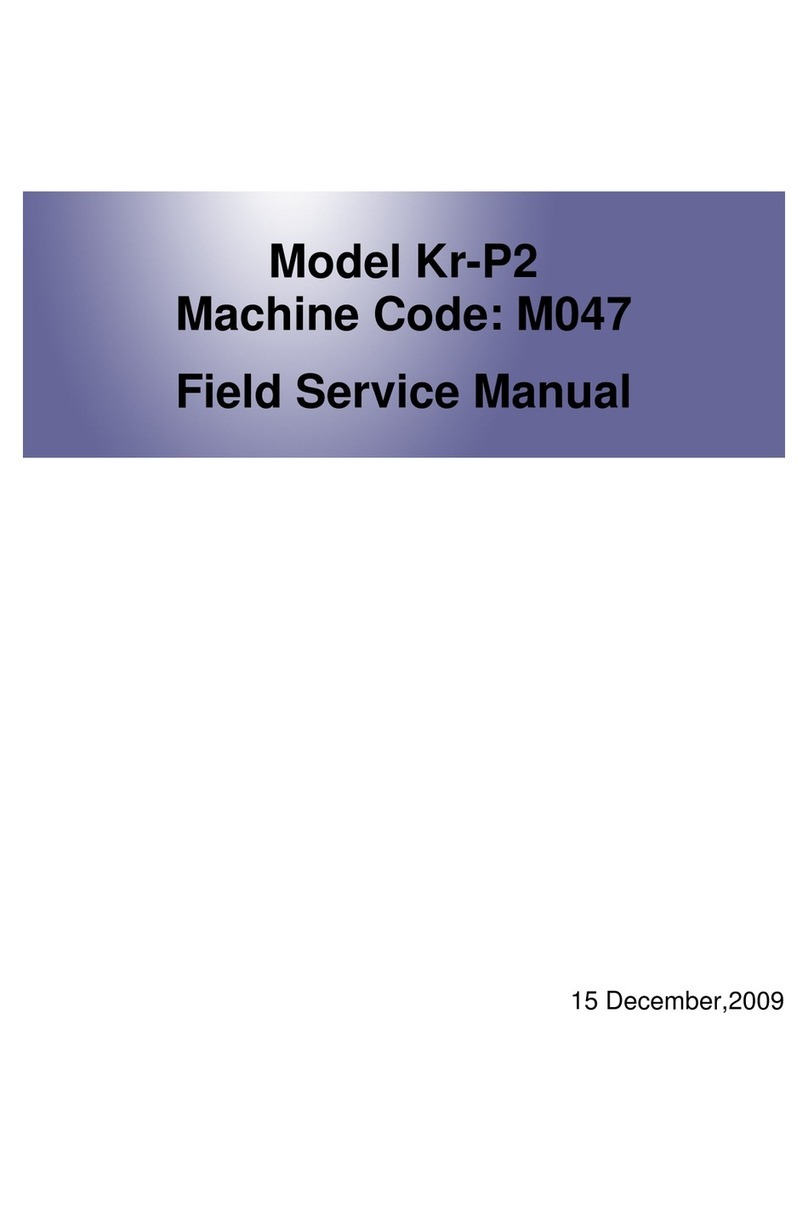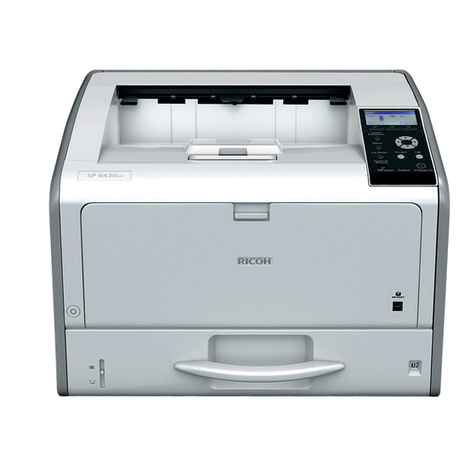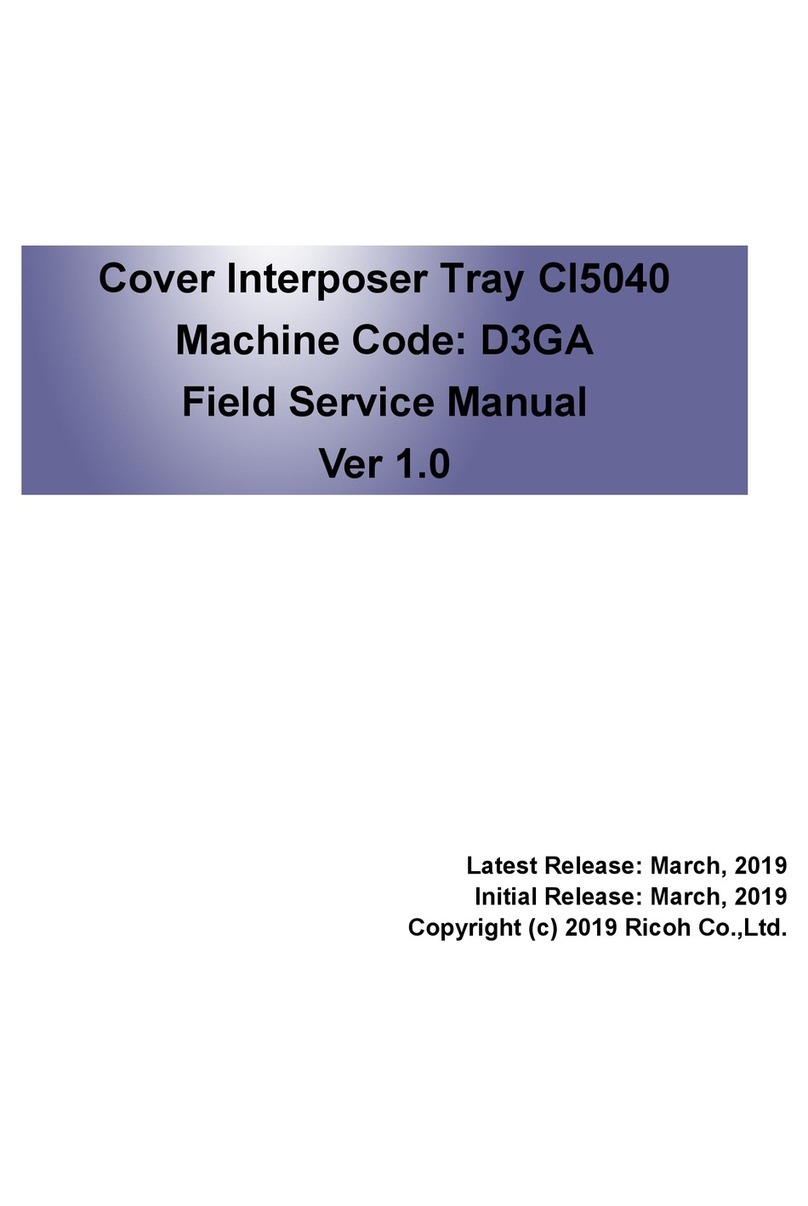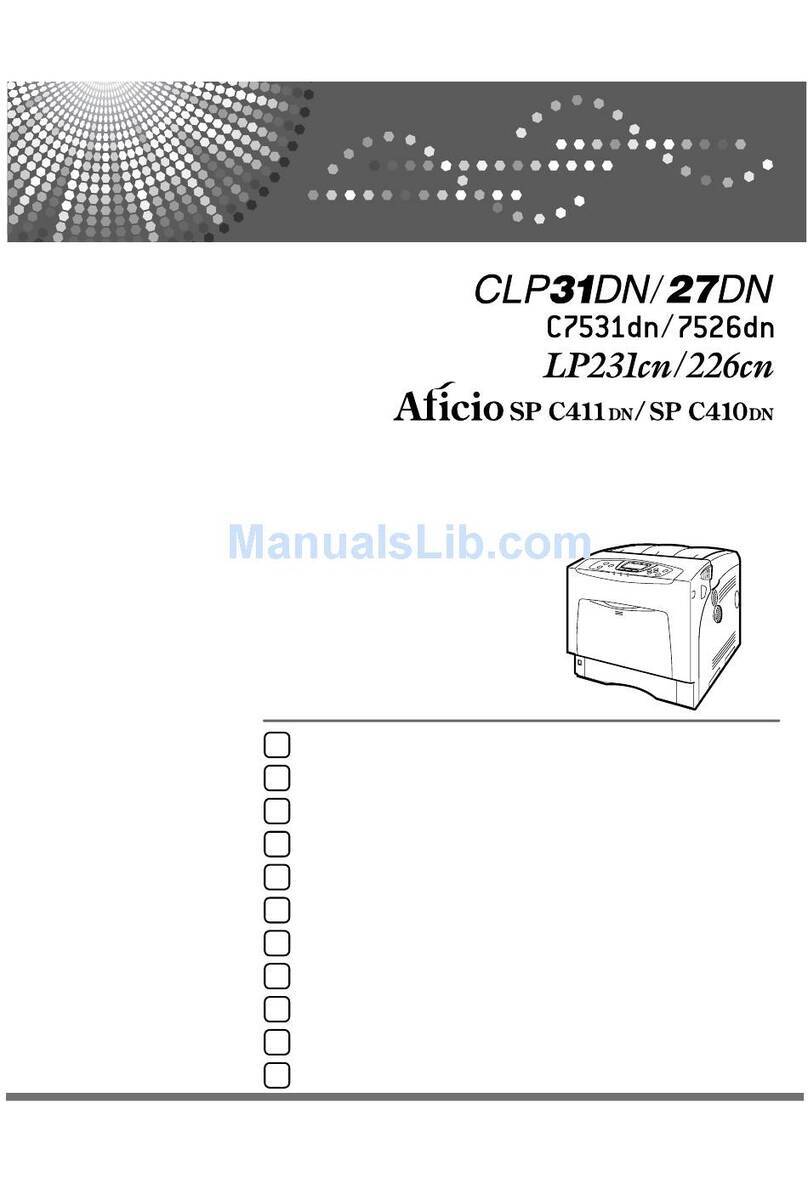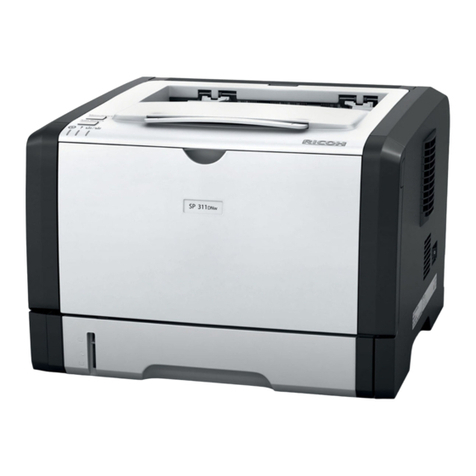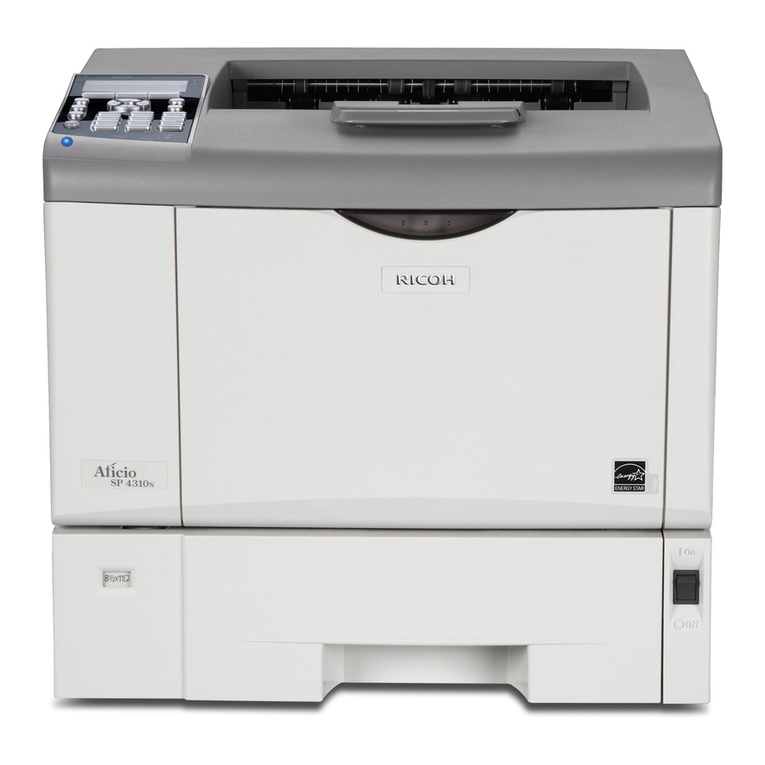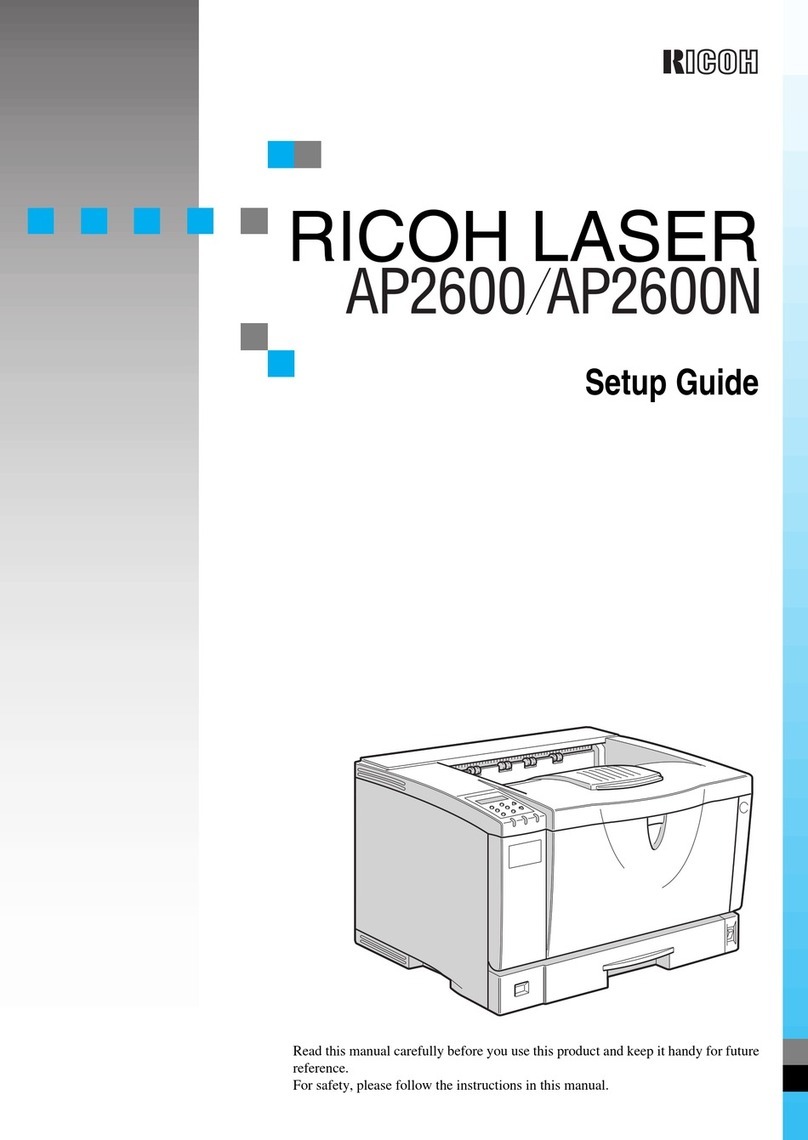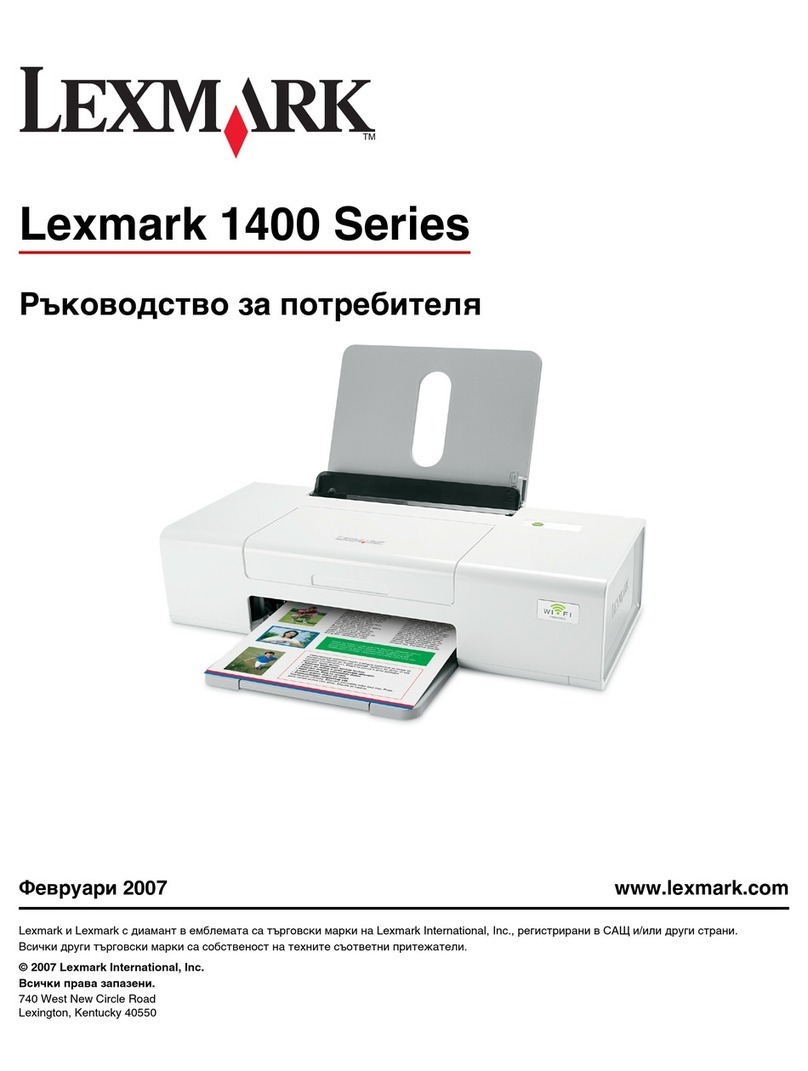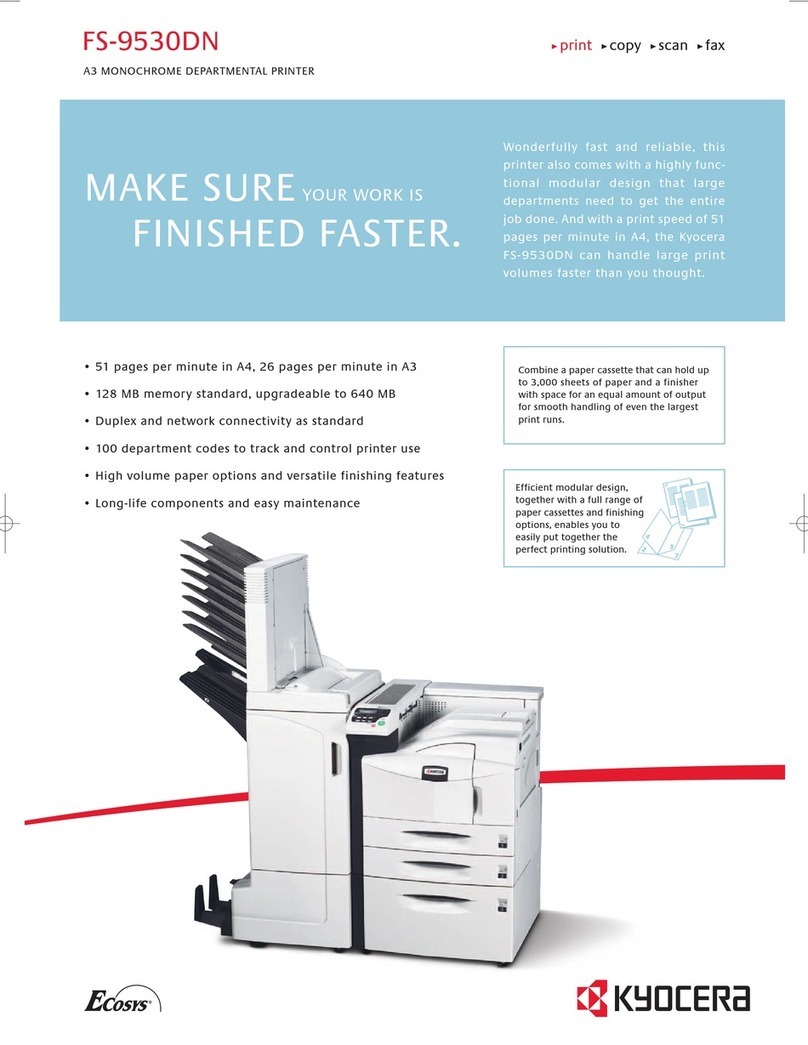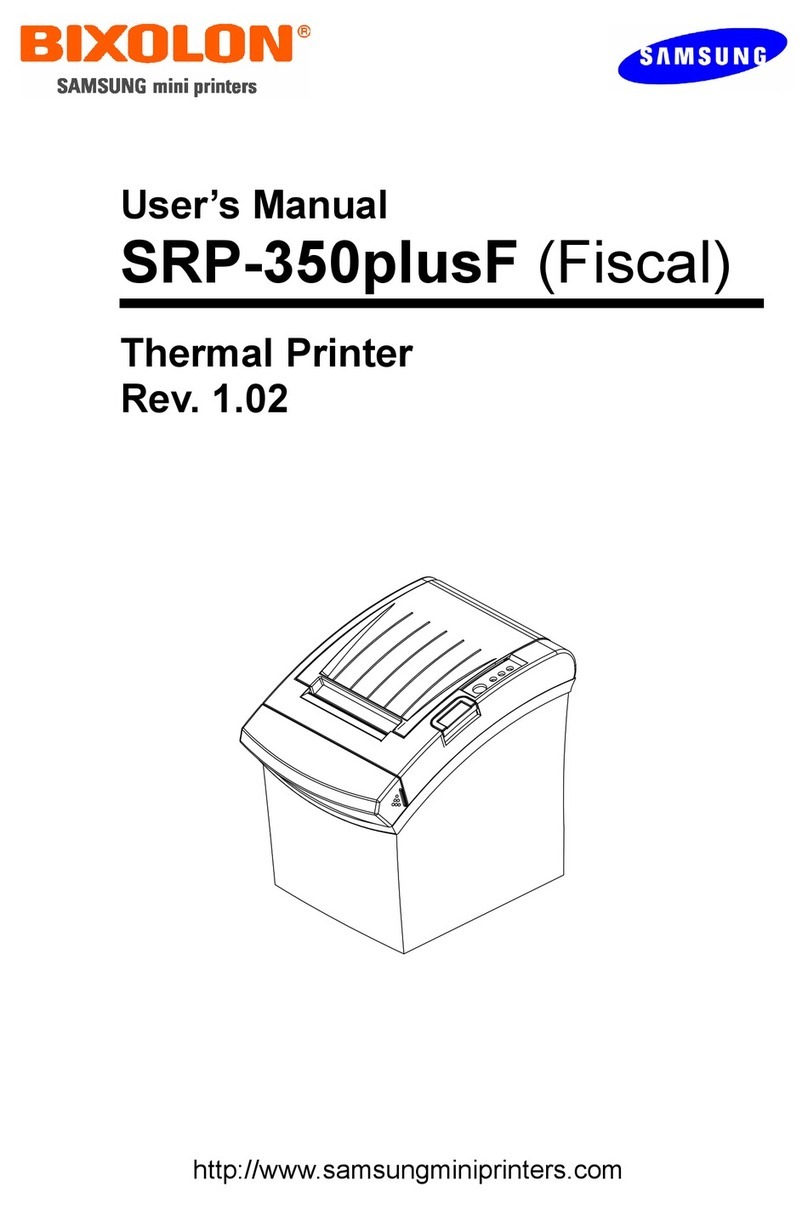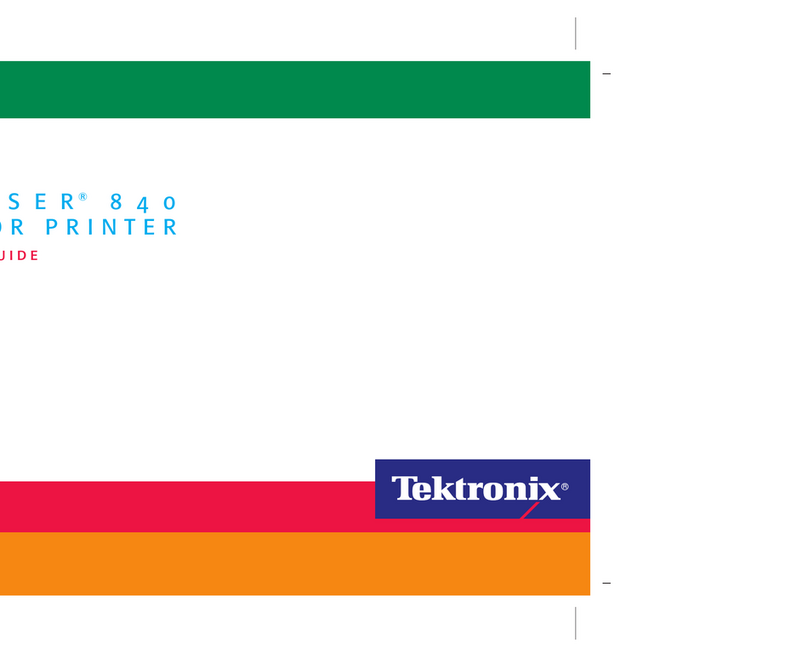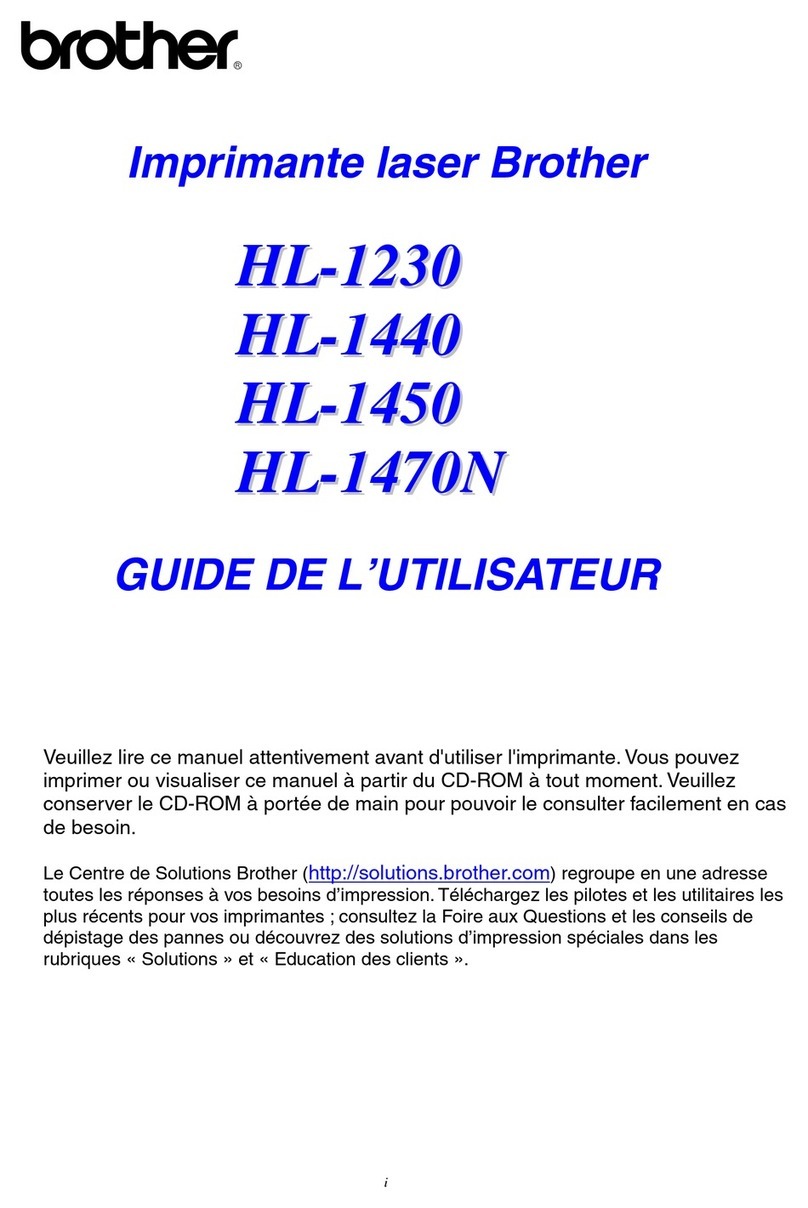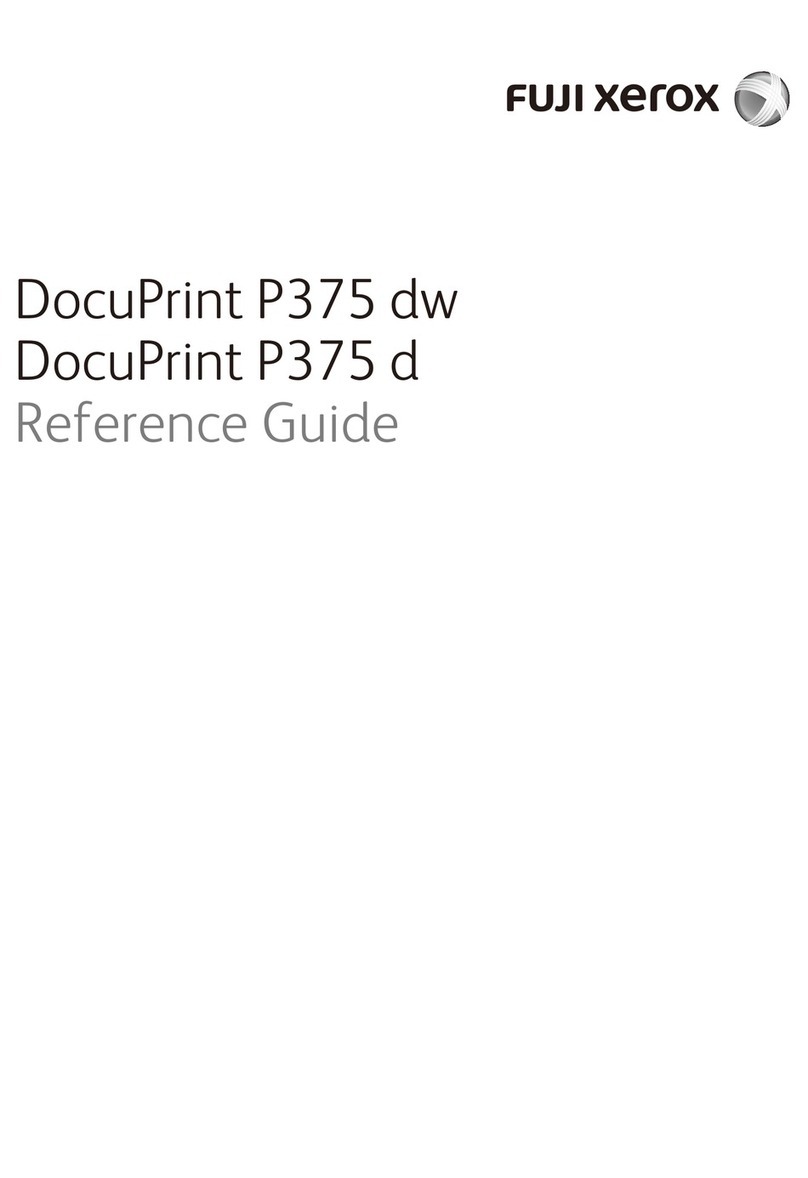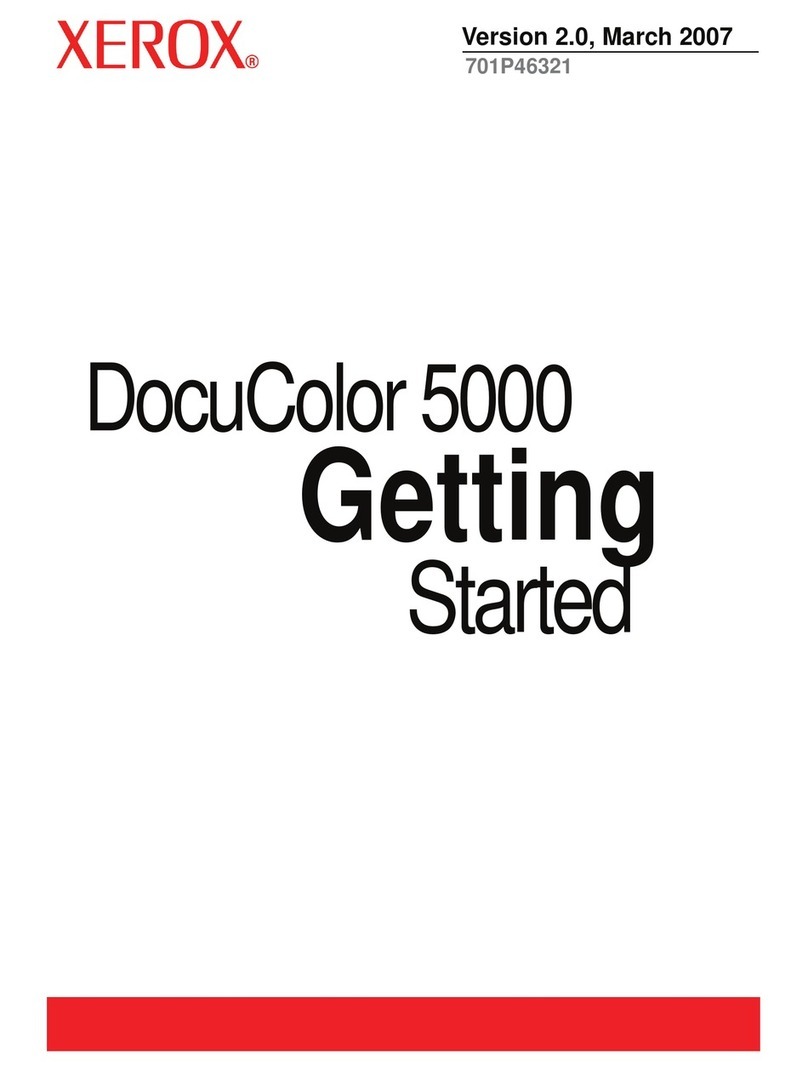
1.5 Outline of Mechanism
1.5.1 Main unit layout diagram
Exposure unit
A xenon lamp is used for flash
exposure. A stepper motor
moves mirrors and lens for the
desired magnification:
0.64 to 1.42
RDH
The air knife separates the leading edges of
the originals. The lowest original is held
against the transport belts by the suction of
the vacuum fan and fed by the belts. Even
in one-to-one copying, this high-speed ADF
can meet 101 CPM. Automatic duplex
copying is also available.
Fusing unit
Heat and pressure roller
system is used with silicon oil.
Paper feed tray
The upper tray stacks
up to 500 sheets. The
middle and lower
trays stack up to
1,000 sheets. FRR
system is used as the
paper feed
mechanism.
Duplex unit
The air knife separates the leading edge of
the copies. The lowest copy is held against
the transport belts by the suction of the
vacuum fan and fed by the belts.
Horizontal transport unit
Transports paper from the
LCT.
Transfer and
separation unit
A high voltage
negative corona
transfers positively
charged toner to
paper. A high voltage
ac corona breaks the
attraction between the
paper and OPC.
Cleaning unit
Magnetic brush system for
cleaning. Scavenging
roller collects toner from
the magnetic brush. (--) dc
bias voltage is applied to
the cleaning roller and
scavenging roller. (+) dc is
applied to the PCC to
increase cleaning
efficiency.
Development unit
Employs a magnetic brush
system using 3 magnetic rollers.
For toner density control, toner
density and ID sensors are
used. Toner is replenished from
a cartridge.
Photoconductor
An OPC belt is used as the
photoconductor. Its image
producing area is equally divided
into 5 A4/B5 segments, 4 B4
segments, or 3 A3 segments,
according to the copy paper size.
OPC cleaning brush
Removes filming material from
the OPC surface and refreshes
OPC surface.
Eraser unit
Erase system
employs LEDs.
Charge corona unit
Scorotron system is employed
to give a uniform and constant
electric charge on the OPC.
(--) dc high voltage is applied
to a tungsten wire, and the
OPC is charged negatively by
corona discharge.
1 July 1994 Outline of Mechanism
1-7
